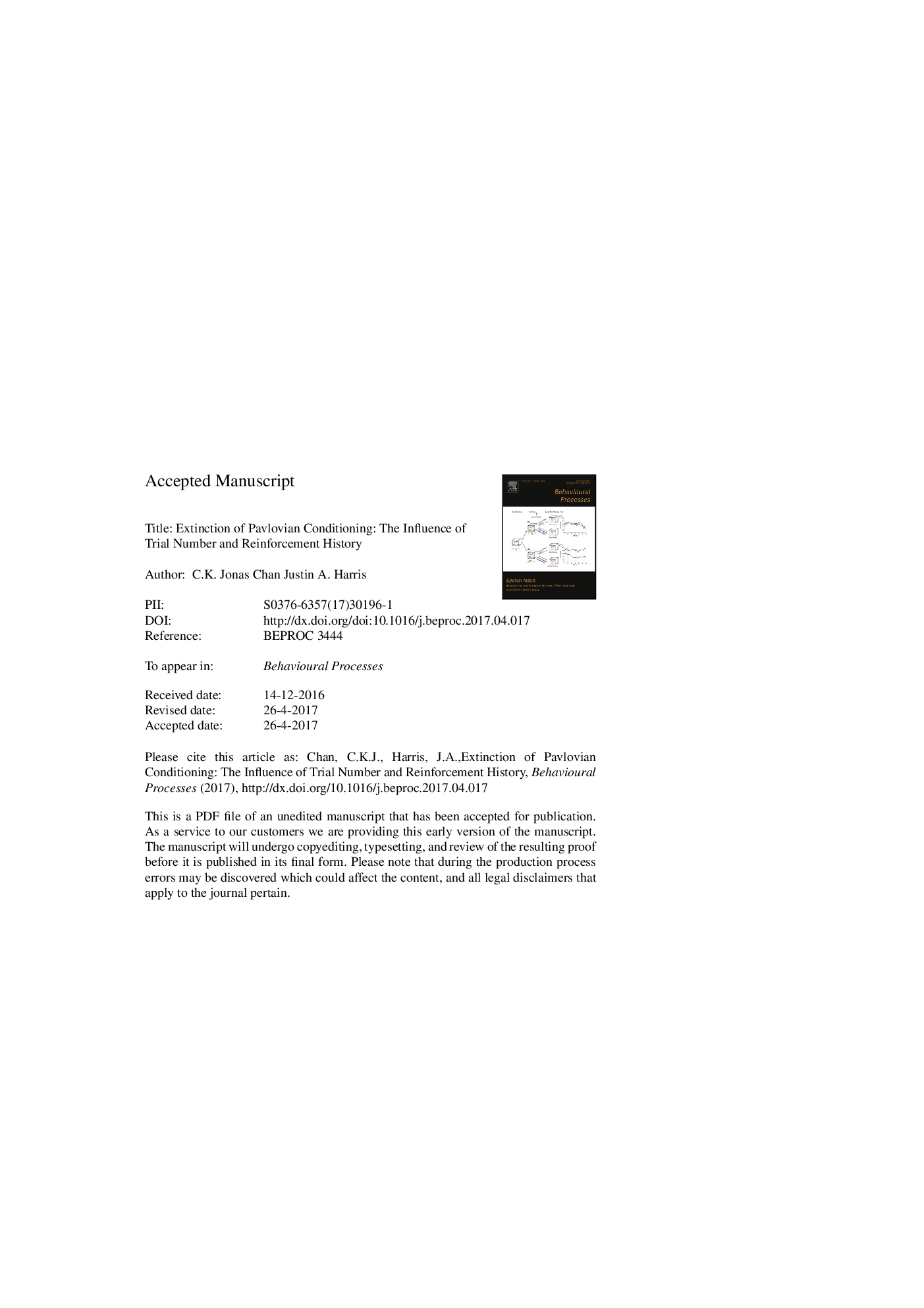| Article ID | Journal | Published Year | Pages | File Type |
|---|---|---|---|---|
| 5539616 | Behavioural Processes | 2017 | 28 Pages |
Abstract
Pavlovian conditioning is sensitive to the temporal relationship between the conditioned stimulus (CS) and the unconditioned stimulus (US). This has motivated models that describe learning as a process that continuously updates associative strength during the trial or specifically encodes the CS-US interval. These models predict that extinction of responding is also continuous, such that response loss is proportional to the cumulative duration of exposure to the CS without the US. We review evidence showing that this prediction is incorrect, and that extinction is trial-based rather than time-based. We also present two experiments that test the importance of trials versus time on the Partial Reinforcement Extinction Effect (PREE), in which responding extinguishes more slowly for a CS that was inconsistently reinforced with the US than for a consistently reinforced one. We show that increasing the number of extinction trials of the partially reinforced CS, relative to the consistently reinforced CS, overcomes the PREE. However, increasing the duration of extinction trials by the same amount does not overcome the PREE. We conclude that animals learn about the likelihood of the US per trial during conditioning, and learn trial-by-trial about the absence of the US during extinction. Moreover, what they learn about the likelihood of the US during conditioning affects how sensitive they are to the absence of the US during extinction.
Related Topics
Life Sciences
Agricultural and Biological Sciences
Animal Science and Zoology
Authors
C.K.J. Chan, Justin A. Harris,
